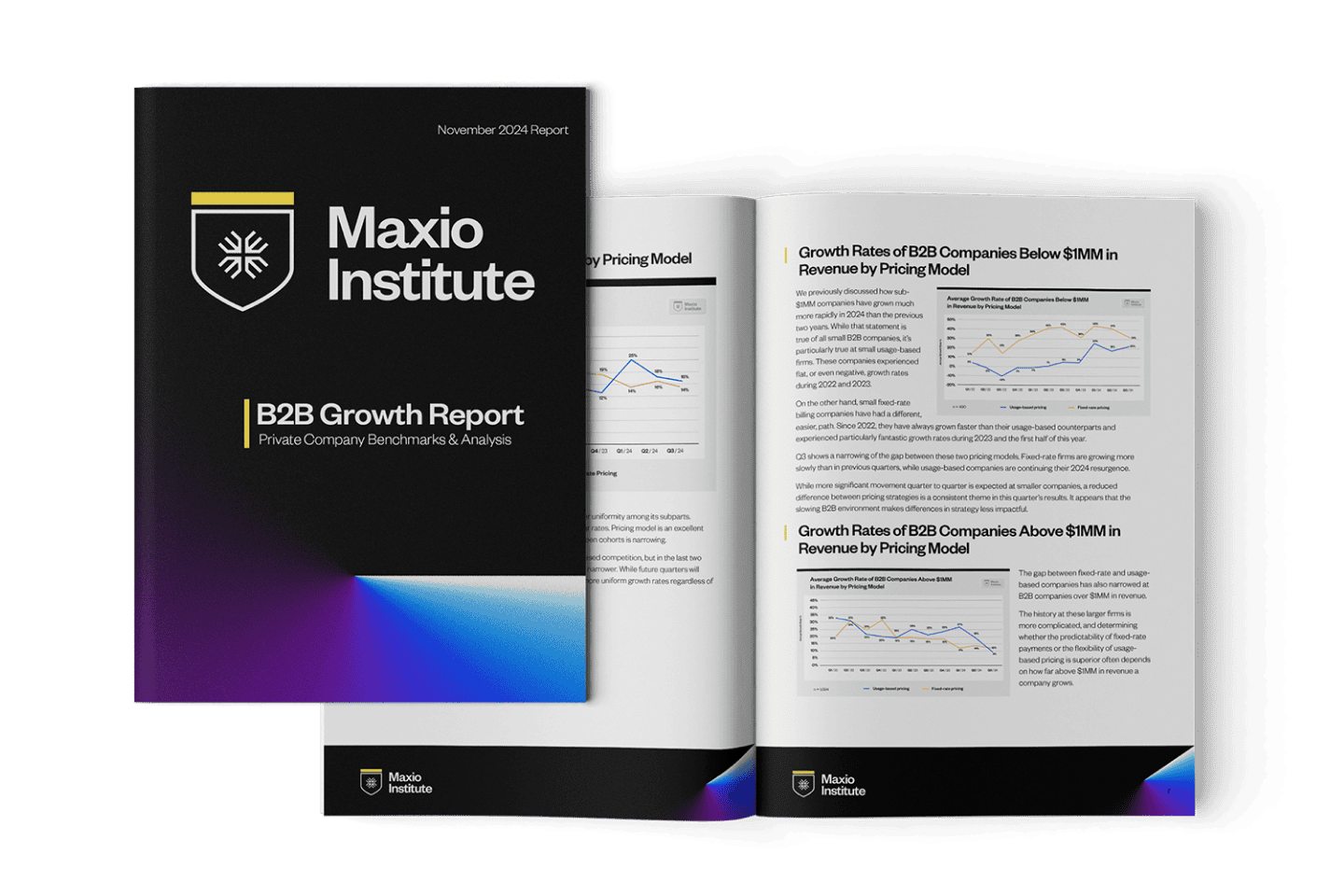-
Subscription billing
Manage even the most complex billing models with ease
Subscription management
Simply your customer lifecycle management, no matter how you bill
Revenue recognition
Automate your revenue recognition schedules to ensure GAAP compliance
Metrics & analytics
Leverage your billing, invoicing, and customer data for deep insights
By Go-to-Market Model
By Function
-
Subscription billing
-
Subscription management
-
Revenue recognition
-
Metrics & analytics
- Take a tour
By Go-to-Market Model
By Function
-
-
Maxio Platform
Your financial operations platform to manage subscriptions, billing, revenue recognition, and financial reporting.
Featured Modules
Advanced Billing
Automated recurring billing to power your product-led or self-service strategy
A/R Management
Reduce your A/R balance, drive down DSO, and get cash in the door faster
Advanced Revenue Management
GAAP/IFRS-compliant revenue recognition your auditors will love
Milestone-Based Projects
Bill customers and recognize revenue based on future events (i.e. implementations)
Expense Amortization
Expense accounting for prepaid expenses, fixed assets, and sales commissions
-
Pricing
-
Content Library
Get practical tips and tricks to improve your daily financial workflows
Blog
Level up your billing and finance knowledge, and keep up with the latest in SaaS
Podcast
Listen to engaging conversations with leading SaaS and finance experts
Maxio Institute
Get the latest insights into SaaS growth based on real companies’ billing data
Case Studies
Read real customer stories, and learn why B2B leaders love Maxio
SaaSpedia
The encyclopedia of SaaS finance terms and metrics

-
Developers
-

-
Maxio Platform
-
Get a Demo
ARR Components
What’s ARR?
ARR is a metric used by SaaS companies that shows the value of the contracted recurring revenue components of a business’s term subscriptions calculated in a one-year period. It is used most often by B2B businesses that use subscription models to bill their customers for their services.
Is ARR Same as Revenue?
There can be significant confusion over the term ‘ARR’ itself, its usage, and the actual measurement of ARR because it has the word “revenue” in it, but is not a measure of revenue in the traditional context of GAAP. However ARR components are not necessarily a measure of recognized revenue. ARR is usually calculated very differently from recognized revenue, and is most certainly utilized for a different purpose.
Each organization chooses their own definition of and rules for determining what’s ARR, as well as calculating and presenting it to stakeholders. The fact that each business has a unique way of defining and calculating ARR is part of the reason behind the confusion surrounding the term.
Therefore, when communicating information about your Annual Recurring Revenue with people outside your organization, it’s important to clearly state your logic and rationale behind your definitions and calculations when presenting ARR metrics to internal and external stakeholders.
ARR is a measure of the predictable and recurring revenue components of a business such as subscriptions or maintenance. ARR components always exclude one-time fees and for most organizations, exclude variable, usage, and consumption fees.
In the end, ARR involves revenue, but is not synonymous with GAAP revenue, because not all revenue is recurring in nature like the components of ARR.
What Are the Components That Make Up ARR?
For most businesses, what is important about ARR is the growth momentum for the typical components of their Annual Recurring Revenue. These components include:
- ARR added from new sales
- ARR retained from renewals
- ARR added from upgrades and upsets in mid-term or at renewal time
- ARR lost from downgrades and product changes in mid-term or at renewal time
- ARR lost from churned customers or revenue
How ARR is Calculated
The exact calculations are detailed in this blog covering all aspects of ARR, but ARR in addition to these components is frequently measured in both absolute and relative values and is often presented in the context of incremental changes from period to period.
In the report below, you’ll see the relative contribution to the total ARR for new subscriptions and renewal subscriptions.
This report might be typical of an early-stage business where new sales significantly outpace renewals. As the business matures and hits a key inflection point, the percent of total ARR contributed by new subscriptions will begin to steadily decline, assuming churn rates are reasonable.
Hopefully by now we’ve answered your question of ‘what’s ARR?’. If you care to see how your company’s SaaS metrics such as ARR stack up to your peers’s metrics, check out OpenView’s SaaS metric benchmarks today to find out.
